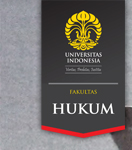Abstract
This research aims to observe whether the Trademark Law can contribute to protect Indonesia’s batik business, particularly for the small-medium enterprises who produce and sell batik products (“Batik SMEs”). The individual trademark system has not been successful to support the batik SMEs’ business. However, the fact that those SMEs gather in a community, organization, or kinships bring potentials for the development of collective trademarks, which can address the problems that individual trademark cannot anticipate. This research finds that, in order to anticipate the free-trade ‘attack,’ i.e. imported textiles with batik patterns/motifs; Indonesian batik SMEs need to be nurtured and encouraged to register their own collective trademarks, and to build their branding infrastructure, through local batik community’s standardization, and collective batik labeling. This recommendation is also proposed considering the government’s ineffective policy on Batikmark. This research will take samples of Batik SMEs in several areas, namely Yogyakarta, Pekalongan, Solo, and Jakarta. Those areas have been recalled as some of the centers for Batik production and trading activities. This research is conducted through combining the quantitative and qualitative-empirical methods. Data are collected through literature studies, interviews, as well as questionnaires, including site visits and discussions with the SMEs in those areas.
References
Books
Elliot, Inger McCabe. 2004. Batik – Fabled Cloth of Java (Periplus Editions (HK) Ltd.).
Firth, Alison, et.al. 2012. Trade Marks, Law and Practice – Third Edition (Bristol: Jordan
Publishing Limited).
Hamzuri. 1989. Batik Klasik (Djambatan).
Katalog Batik Khas Yogyakarta. Kantor Wilayah Departemen Perindustrian Propinsi
Daerah Istimewa Yogyakarta (Yogyakarta: Proyek Pengembangan Industri
Kecil dan Menengah (PIKM) Propinsi D.I. Yogyakarta, 1996).
Lin, Lee Chor. 2007. Batik – Creating an Identity (National Museum of Singapore).
Nomination for Inscription on the Representative List in 2009 (Reference No.
00170). Convention for the Safeguarding of the Intangible Cultural Heritage,
Intergovernmental Committee for the Safeguarding of the Intangible Cultural
Heritage, Fourth Session (Abu Dhabi, United Arab Emirates: UNESCO, 2009).
Sekimoto, Teruo et.al.. 2003. Handicrafts and Socio-Cultural Change: A Study of Batik
Making in Cirebon and Pekalongan (Centre for Japanese Studies, University of
Indonesia).
Widyawati, Naniek. 2004. Settlement of Batik Enterpreneurs in Surakarta (Yogyakarta:
Gadjah Mada University Press).
Wulandari, Ari. 2011. Batik Nusantara: Makna Filosofis, Cara Pembuatan, dan Industri
Batik, Edisi 1 (Yogyakarta: ANDI).
Year 3 Vol. 3, September - December 2013 INDONESIA Law Review
~ 203 ~
Journal and Thesis
Sardjono, Agus. Titik Singgung Perlindungan HKI: Hak Cipta, Merek, dan Desain
Industri, Jurnal Hak Kekayaan Intelektual Vol. 1 No. 1, 2012.
Sari, Dyan Ratna. Ekses Pasal 10 UU No. 19 Tahun 2002 tentang Hak Cipta Terkait
Pemanfaatan Motif Batik Surakarta. Skripsi, Fakultas Hukum Universitas
Indonesia, 2013.
Legal Documents
Menteri Perindustrian Republik Indonesia. Peraturan Menteri Perindustrian Republik
Indonesia Nomor: 74/M-IND/PER/9/2007 tentang Penggunaan Batikmark
“batik Indonesia” pada Batik Buatan Indonesia.
Republik Indonesia. Undang-Undang Nomor 19 Tahun 2012 tentang Hak Cipta,
Lembaran Negara Republik Indonesia Nomor 85 Tahun 2002, Tambahan
Lembaran Negara Nomor 4220.
Internet Resources
Balai Besar Kerajinan dan Batik Yogyakarta, http://www.batik.go.id.
Batik Tulis, http://www.kampoenglaweyan.com, diakses pada 17 Juli 2013.
Batik dan Nilai Heritage, http://www.batikyogyakarta.com/category/sejarah/,
diakses pada 9 Juli 2013.
Batikmark Sepi Peminat, Dinas Perindustrian, Perdagangan, Koperasi, dan UMKM
Kota Pekalongan, http://perindagkop.pekalongankota.go.id/, diakses pada 18
Juli 2013.
Busana Batik di Lingkungan Kraton, http://www.kerajaannusantara.com/id/
surakarta-hadiningrat/busana-batik-keraton, diakses pada 19 Juli 2013.
Geografi, www.pekalongankota.go.id, diakses pada 17 Juli 2013.
Kampung Batik Kauman, http://surakarta.go.id/konten/kampung-batik-kauman.
Pembangunan Daerah Bidang Koperasi dan Usaha Kecil Menengah, Website Pemerintah
Kota Pekalongan, http://www.pekalongankota.go.id, diakses pada 17 Juli 2013.
Sejarah - Kampoeng Laweyan, http://www.kampoenglaweyan.com, diakses pada 15
Juli 2013.
Sejarah, http://www.pemda-diy.go.id/, diakses pada 17 Juli 2013.
Sejarah Singkat, Website Pemerintah Kota Pekalongan, http://www.pekalongankota.
go.id, diakses pada 17 Juli 2013.
Selayang Pandang, http://surakarta.go.id/konten/selayang-pandang.
Sentra Industri, Dinas Perindustrian, Perdagangan, Koperasi, dan UMKM Kota
Pekalongan, http://perindagkop.pekalongankota.go.id/, diakses pada 17 Juli
2013.
Steelyana, Evi, Batik, A Beautiful Cultural Heritage that Preserve Culture and Support
Economic Development in Indonesia (Bina Nusantara University), diakses
melalui www.ssrn.com, pada 9 Juli 2013, hlm. 6.
Tentang Batik, www.museumbatik.com, diakses pada 9 Juli 2013
Recommended Citation
Sardjono, Agus; Prastyo, Brian Amy; and Larasati, Desrezka Gunti
(2013)
"INDONESIAN EXPERIENCE IN DEALING WITH TRADEMARK LAW: CASE STUDY OF BATIK SMEs,"
Indonesia Law Review: Vol. 3:
No.
3, Article 1.
DOI: 10.15742/ilrev.v3n3.37
Available at:
https://scholarhub.ui.ac.id/ilrev/vol3/iss3/1

